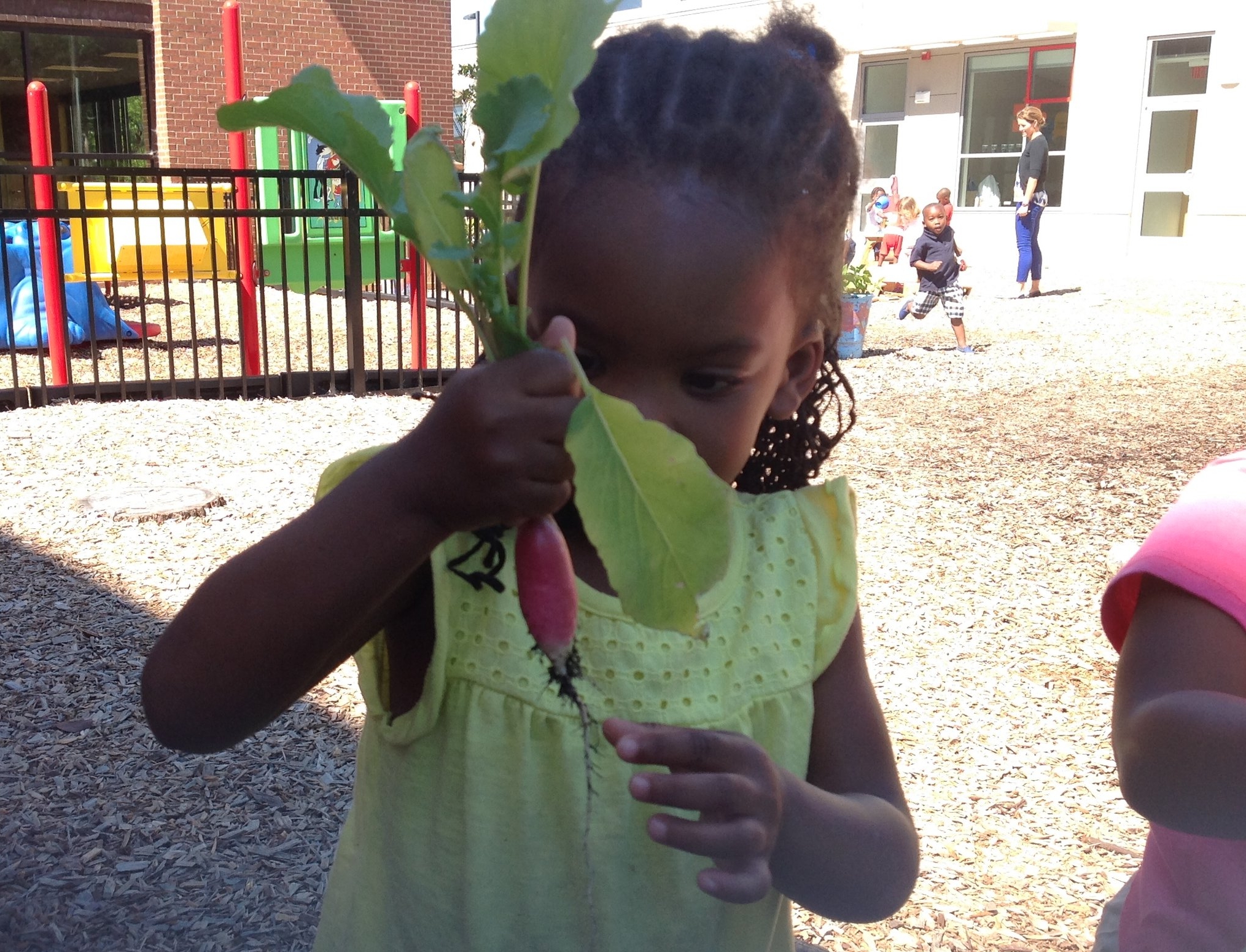
What you need to know:
Eating healthy, nutritious foods supports children’s physical growth. In addition, it helps improve their energy, motivation, mood, and ability to focus. When children form positive thoughts and habits around healthy eating, it makes it more likely that they will reach for healthy foods in the future. You can support this development by involving your child in growing, cooking, identifying, and talking about healthy foods. The best way to promote healthy eating habits is to offer nutritious foods multiple times and allow your child to decide whether to eat, what to eat, and how much to eat.
How you can support your child’s development of this skill:
- Play with real and pretend healthy foods, such as fruits and vegetables.
- Bring your child to grocery stores, farms, or markets to help them build an understanding of where to find and buy food.
- Read books about healthy food and where food comes from.
Model and Narrate Healthy Food Choices
- Talk to your child about healthy food choices.
- Focus on pointing out the positive behaviors you observe.
- “It’s important to eat different types of foods. You’re eating fruits and veggies.”
- “We are growing tomatoes in our garden. They are healthy and yummy!”
Present All Food as Attractive, Enjoyable Options
- Celebrate the deliciousness and benefits of all foods.
- “Salmon and trout are both fish but taste different!”
- “This Indian food is spicy and yummy!”
Development of these skills
Below are descriptions of how preschoolers’ understanding of healthy foods develops over time. Each child develops in their own way and at their own pace, so it’s okay if your child isn’t showing the behaviors listed below just yet.
Between 36 and 48 months, children may:
-
Recognize that food and nutrition are important to healthy development
-
Often require adult guidance to make healthy eating choices
Between 48 and 60 months, children may:
-
Show greater understanding of how foods and nutrition help the body grow and be healthy
-
Make healthy eating choices both independently and with support
-
Tell the difference between some healthy and unhealthy foods
-
Control how much they eat based on hunger and fullness
« CrossFit for KidsPromoting Sense of Self »


